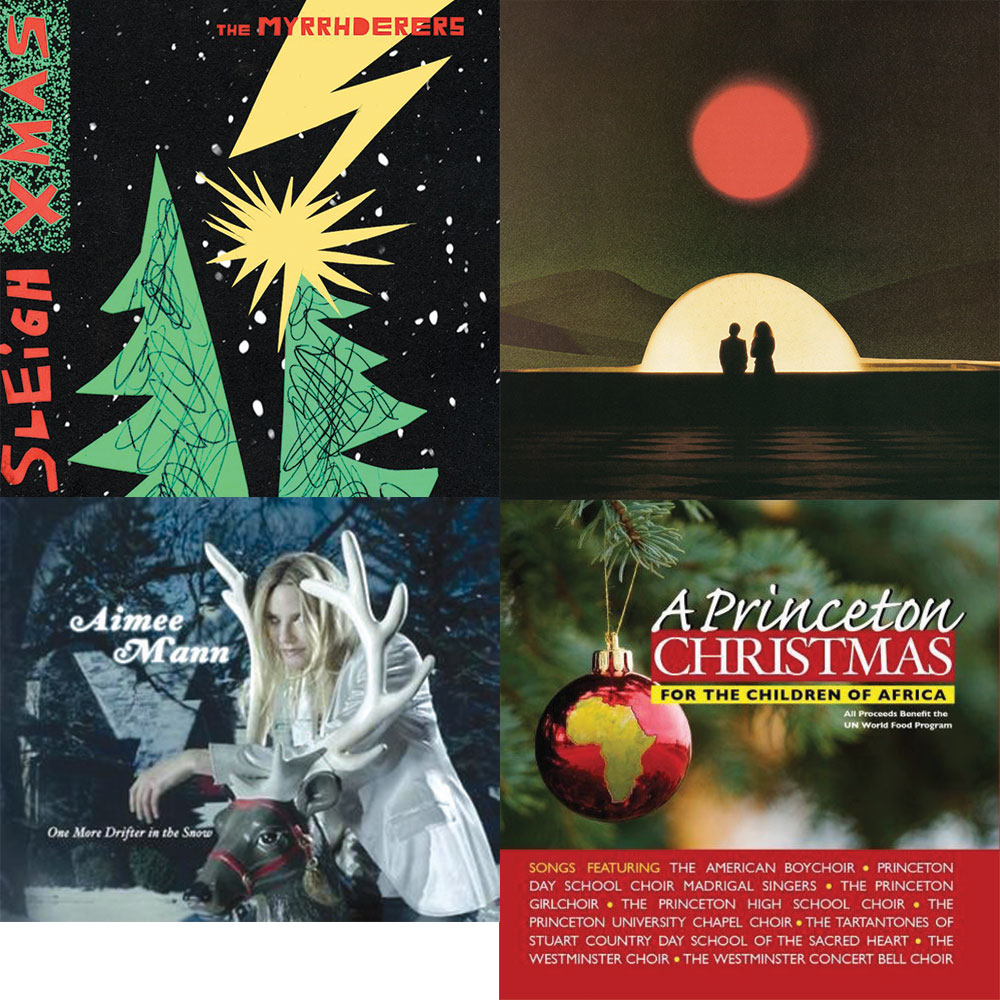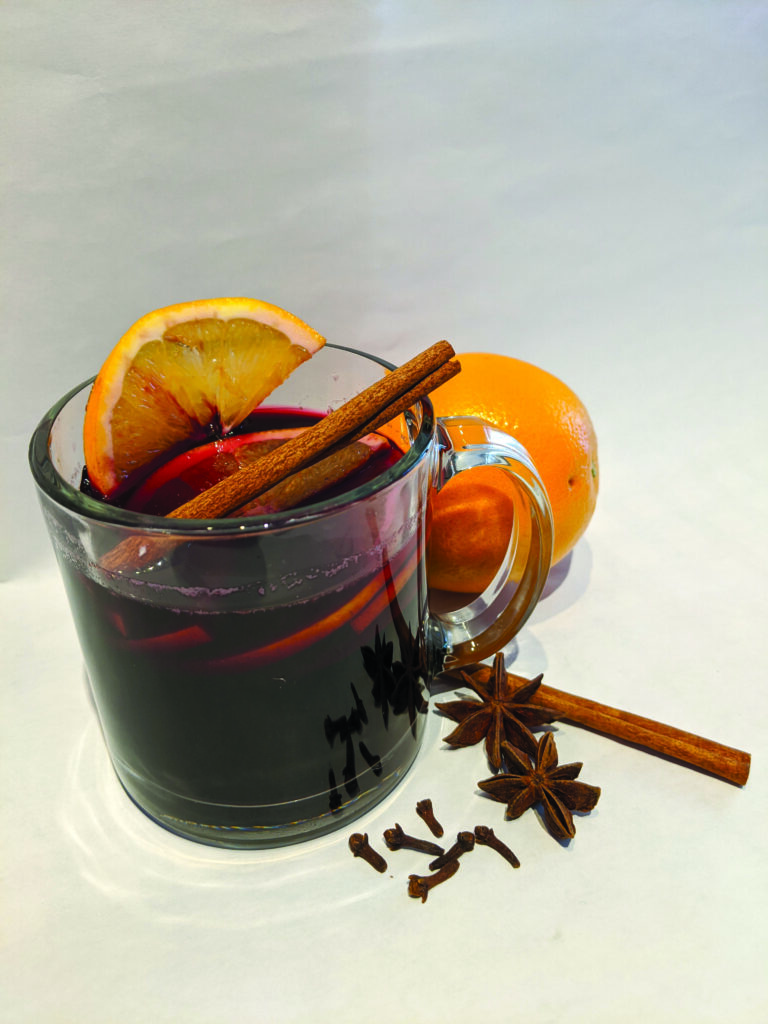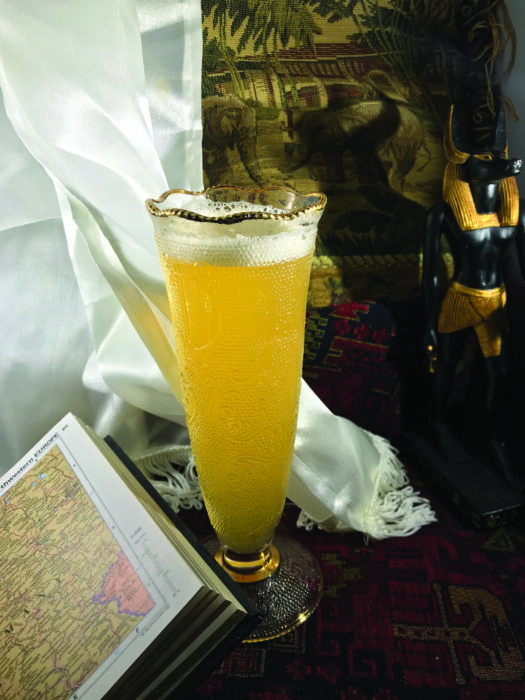The Myrrhderers, The Myrrhderers Sleigh Christmas (self-released)
It was with great sadness that I read last week there’d be no live Trans Siberian Orchestra shows coming to the area, just a streaming thingamajig instead. I looked to the universe, hoping to be cheered up, and lo, hark, behold, a wonderful holiday EP from a bunch of trolling punks declaring themselves to be a “North Pole punk-rock supergroup,” made up of members of “Dead Kringles, Prancid and Sleigher.” I immediately decided that the record would receive an A+ grade, then listened to all five songs, which literally only required 12 minutes out of my life. It’s all actually quite good if you like Good Charlotte demos and junk like that; their rub of “Deck The Halls” could actually be Green Day in Santa beards for all I know. “God Rest Ye Merry Gentlemen” is straightedge-leaning punk-pop lunacy, and so on. These guys aren’t just pikers with an eight-track recorder from 1991, but I didn’t deduct points for their decent production quality. Very tolerable. A+
Deep Sea Diver, Impossible Weight (ATO Records)
This album being so good, I think I’ll pass on listening to their last couple of records, as the consensus seems to be that they’re not as ambitious. The quartet is led by Seattleite Jessica Dobson, who in the past has played with a who’s-who of indie royalty (Shins, Spoon, Beck, others), experiences that have helped to shape her into the closest thing to a millennials’ Chrissie Hynde that I’ve heard to date. There’s a palpable grunge edge to this stuff; “Lights Out” sounds like a cross between Yeah Yeah Yeahs (with regard to the vocal approach) and Superdrag (relative to the mashed-potato guitar sound), but she’s obviously got a jones for trip-hop, by the afterparty steez emanating from “Shattering The Hourglass.” So that’s all well and good, and the tunes, regardless of their disparate influences, sound like they belong together, but the killer bit is that Dobson’s songwriting is outstanding. Well worth your stream time. A+
Retro Playlist
Merry corona-mas everyone, as the science nerds like to say down at CDC headquarters! There’s still plenty of time to order holiday music CDs, so today I’ll look at albums this page has covered in the past, but first it’s your reminder of the festive songs I can’t stand in the least, like “Feliz Navidad,” “O Holy Night” and of course Billy Squier’s “Christmas Is A Time To Say I Love You,” which, yes, I already harped on a couple of weeks ago, but wait, go listen to it again, if your stomach can handle it. Isn’t his voice super-annoying, like, doesn’t he sound like some sort of post-punk WC Fields, as though he wants to say “Go away kid, ya bother me” after every line? I mean, sure, I’d rather be subjected to Billy Squier’s dumb song than “O Holy Night” while I’m in line at Walgreens buying some stupid last-minute thing, like my hatred for that song isn’t bone-marrow level the way it is with John Lennon and Yoko Ono’s “Happy Christmas,” but — oh, you get the point.
For more tolerable holiday sounds, let’s go all the way back to 2006 for til Tuesday front-lady Aimee Mann’s Another Drifter In The Snow. It’s a mellow, very listenable collection, and her choices were all good: Mel Torme’s “The Christmas Song”; a bearable “Winter Wonderland” and for (polite) laughs, a rip of “You’re A Mean One, Mr. Grinch.”
In 2008 there was the charity-driven A Princeton Christmas: For The Children Of Africa album, by Princeton Choirs. Beautiful, reflective stuff for those quiet holiday nights, featuring donated tracks sung by The American Boychoir, The Westminster Concert Bell Choir and several others. Fun fact for cynics: Despite all the holiness baked into the tracks, there nevertheless exists a one-star review on Amazon submitted by someone who freaked out over the fact that the Princeton Theological Seminary Choir wasn’t brought into the mix. I really don’t need to expound on that, I’m sure.
PLAYLIST
A seriously abridged compendium of recent and future CD releases
• Yee hah. It’s a landslide of new releases, vying for your Hanukkwaanzmas dollar! I feel totally blessed this time of year, what with all the new albums coming out on Dec. 11, but honestly, this year I may not have enough snark left to deal with it all! I mean, just look, it’s a double-live album from Belle and Sebastian, called What To Look For In Summer, can you even stand it? Fifty million hipsters totally love dancing their happy irony dance to BS’s gentle, inoffensive twee-pop, and they only dance harder when the song is so boring and unlistenable that all their friends give up on them forever, like all that stuff from Fold Your Hands Child, You Walk Like a Peasant (they played the whole album during their headlining stint at the Boaty Weekender festival, the famous gathering place for rich people with boats and stock options, and some of those live versions are on this album). The album starts off with a version of the Scottish beer-guzzling singalong “The Song of the Clyde,” isn’t that so awesome? I’m totally going to listen to this album on my schooner as I chase that devil Moby Dick all over the seven seas, with my ironic hipster bos’n mates who all have mad harpoon skills and bunny tattoos!
• Wait, fam, look, we don’t just have young millennial hipster deck-swabs to talk about, because thar she blows, a new album from Paul McCartney, titled McCartney III! I totally can’t remember the name of his old band, something like Herman’s Hermits, or Len, or whatever, but either way, this guy, whose eyelift surgery makes him look like Carol Channing at closing time at an after-hours bash, is at it again, just cold bringin’ the guitar-pop music, to teach you crazy Death Grips listeners how it’s done! Boy, I can hardly wait to dig my ears into the new version of “Coming Up,” any of you boomers remember that awful song? Ah, here it is. It sounds like it’s sung by drunken Ewoks who don’t know how to use their cheap downloadable music-making software. Gack, it’s even more horrible than the original, so let’s put this aside for now and press on.
• Continuing our excursion to find musical coolness whilst sailing on board the Pequod, Canadian folkie duo Kacy & Clayton have been around since 2011, doing their part to bring good folkie-fied feels to the hipster whaling community and all young people who watch shows like Archer just to annoy their roommates. Their new album is Plastic Bouquet, a collaboration of sorts with New Zealand musician Marlon Williams! No, I have no idea who that is either, but whatever, yay Marlon Whastisname! The lead single, “I Wonder Why” mostly sounds like Roy Orbison, but it’s mostly an acoustic guitar thing, so there’s a rootsy Hank Williams feel to it as well. It’s OK.
• Lastly, we should probably take a quick listen to whatever’s going on in the new M. Ward album, Think Of Spring, specifically the single “For Heaven’s Sake.” Spoiler: It’s a wispy, dreamy unplugged-strummy-guitar tune with way too much reverb on his voice. I suppose I’d love it if I were a salty hipster whaleboat swab born in 1987 instead of never-you-mind-all-that, and had never listened to Simon & Garfunkel, because that’s kind of what it’s like, except it’s bare-bones. But I wasn’t, so I hereby rudely dismiss this song, with extreme prejudice.
• Finally we have Tucson-based Tex-Mex-indie stalwarts Calexico, with their new LP, Seasonal Shift! Huh, how do you like that, it’s a holiday album! The first single is called “Hear The Bells,” in which the boy-eez sing about drinking mescal and selling something or other by the side of the road, I don’t know. Sounds like a cross between Everly Brothers and your least-favorite pop band from the 1980s, if that helps any.







